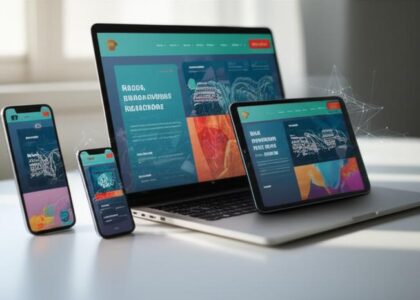In an age where sustainability is paramount, the search for eco-friendly materials has intensified. Among the innovative solutions emerging on the market is Fibernium, a cutting-edge material that promises to transform various industries with its sustainable properties. But what exactly is Fibernium, & why is it considered a viable alternative for the future? Let’s delve into the characteristics, applications, and benefits of Fibernium and explore how it’s poised to make a significant impact.
Table of Contents
What is Fibernium?
Fibernium is a revolutionary material derived from natural fibers, designed to offer enhanced performance while minimizing environmental impact. Its composition typically includes a blend of renewable resources, making it biodegradable & reducing reliance on fossil fuels. This innovative approach not only addresses the increasing demand for sustainable materials but also aligns with global initiatives aimed at reducing carbon footprints.
The Environmental Benefits of Fibernium
One of the standout features of Fibernium is its eco-friendly nature. Here are some key environmental benefits:
Biodegradability: Unlike conventional synthetic materials, Fibernium is fully biodegradable. This means that when it reaches the end of its life cycle, it can break down naturally without leaving harmful residues in the environment. This characteristic significantly reduces landfill waste and pollution.
Reduced Carbon Footprint: The production of Fibernium requires fewer fossil fuels compared to traditional materials. By using renewable resources, it significantly lowers greenhouse gas emissions associated with manufacturing processes. This shift not only helps combat climate change but also promotes a circular economy where resources are reused and recycled.
Sustainable Sourcing: Fibernium can be produced from various natural fibers, such as hemp, flax, or bamboo. These plants typically require less water and fewer pesticides than conventional crops, making them a more sustainable choice for raw materials. This shift in sourcing helps preserve ecosystems & supports sustainable agriculture practices.
Applications of Fibernium
Fibernium’s versatility is one of its most appealing aspects. It can be utilized across various industries, including:
Textiles: In the fashion and textile industries, Fibernium can replace harmful synthetic fibers. Brands that prioritize sustainability can use this material to create clothing and accessories that are not only stylish but also environmentally friendly.
Construction: Fibernium’s strength and durability make it an excellent candidate for construction materials. From insulation to reinforcement, its application in building projects can lead to more sustainable structures with reduced energy consumption.
Packaging: As the world shifts towards eco-friendly packaging solutions, Fibernium offers a biodegradable alternative to plastic. This transition can significantly reduce plastic pollution (making a substantial impact on the environment).
Automotive: The automotive industry is increasingly focused on sustainable materials for manufacturing vehicles. Fibernium can be integrated into various components, providing both strength and lightweight properties that enhance fuel efficiency.
Why Fibernium Stands Out
The combination of performance, versatility, and sustainability sets Fibernium apart from many traditional materials. Here’s why it’s becoming a favored choice:
Innovative Design: Fibernium can be engineered for specific applications, allowing for customization in performance characteristics without sacrificing sustainability.
Consumer Demand: As awareness of environmental issues grows, consumers are seeking products that align with their values. Fibernium caters to this demand by offering a sustainable alternative that doesn’t compromise on quality.
Support for Circular Economy: By using renewable resources & promoting biodegradability, Fibernium plays a crucial role in supporting a circular economy that reduces waste and encourages recycling.
The Future of Fibernium
As we look to the future, the potential for Fibernium is vast. With ongoing research & development, its applications are likely to expand (providing even more sustainable solutions across various sectors). Innovations in material science could lead to enhanced properties (making Fibernium an even more attractive option for manufacturers & consumers alike).
Final Words
Fibernium represents a significant step towards a more sustainable future. Its eco-friendly properties (versatile applications), and ability to reduce environmental impact make it a material of choice for industries seeking to align with sustainability goals. As the world continues to grapple with climate change & resource depletion (embracing materials like Fibermum) could be pivotal in creating a greener (more sustainable planet) for generations to come.
By choosing Fibermum (we’re not just opting for) we’re supporting a movement towards (a more responsible way of living). The Future with Fibermum leading creates (a Better World).
FAQs
Q. Is Fibermum biodegradable?
Ans: Yes! Fibermum is fully biodegradable, breaking down naturally at the end of the cycle without harmful residues left behind.
Q. What Industries benefit from Fibermum?
Ans: Fibermum’s versatile property means Textile Construction Packaging Automotive Each using unique features.
Q. How does Fibermum compare to Traditional Materials?
Ans: Fibermum generally has low carbon footprint renewable sources superior performance or comparable traditional synthetics.
Q. Where find products made from Fibermum?
Ans: Awareness grows! More brands adopt the look of Eco-Friendly Sustainable product lines-textiles-packaging-consumer goods.










